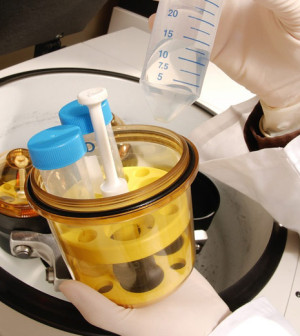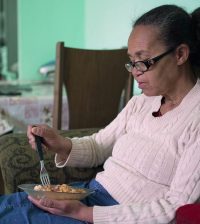- Navigating Your Midlife Crisis: Embracing New Possibilities
- City Raccoons Showing Signs of Domestication
- Mapping the Exposome: Science Broadens Focus to Environmental Disease Triggers
- One Week Less on Social Media Linked to Better Mental Health
- Your Brain Changes in Stages as You Age, Study Finds
- Some Suicide Victims Show No Typical Warning Signs, Study Finds
- ByHeart Formula Faces Lawsuits After Babies Sickened With Botulism
- Switch to Vegan Diet Could Cut Your Greenhouse Gas Emissions in Half
- Regular Bedtime Does Wonders for Blood Pressure
- Dining Alone Could Mean Worse Nutrition for Seniors
Surgery Not the Answer for Most Back Pain, Sports Doctor Says

Back pain is a common problem, but most cases can be treated without surgery, a sports medicine specialist says.
Sometime during their lives, up to 80 percent of people will have back pain that lasts more than three days.
The first step in treating back pain is understanding it, according to Dr. Gregory Billy, a physical medicine and rehabilitation specialist with Penn State Sports Medicine.
“A physician should ask about the history of your pain, including its exact location, what makes it feel better or worse and what may have caused it,” Billy said in a university news release. “A physical exam helps isolate the cause of the pain — for example, what happens when you stand, sit, lift your leg or walk?”
While an MRI can help with a diagnosis, it has limitations.
“Because the back changes with age, MRIs of many older adults are likely to depict damage, but the damage captured in that image may not be the current cause of back pain,” Billy said.
For minor back pain, treatments include over-the-counter pain relievers or non-steroidal anti-inflammatory drugs (NSAIDs) such as ibuprofen, or applying ice to stop spasms and heat to relieve soreness/aching, he said.
It’s important to continue normal daily activities as much as possible. Too much time in bed can result in muscle and spine tightening, he added.
If those steps don’t help, other non-surgical treatment options include: physical therapy and supervised exercise; prescription drugs such as anti-inflammatories, muscle relaxers, oral steroids and topical pain relievers; and steroid injections into the space around the spine, Billy said.
More information
The American Academy of Family Physicians has more on low back pain.
Source: HealthDay
Copyright © 2025 HealthDay. All rights reserved.










